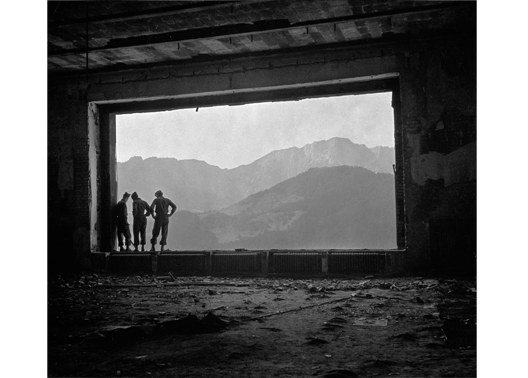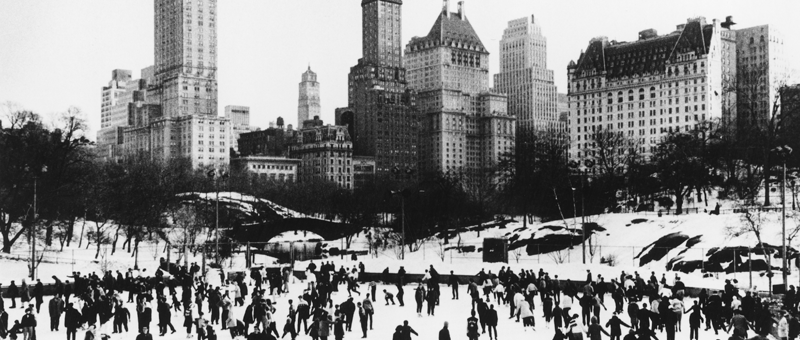
Photography Now: Highlights from our Photography Collections
Renowned lifestyle and fashion photographer Tony Vaccaro has lived an amazing life. He has traveled the world, photographing the most prominent personalities of the 20th century while working for Flair, Look and Life magazines – including Picasso, Duchamp, Muhammad Ali and Sophia Lauren.
His photography career started however in less glamorous circumstances. In 1943 he joined the Allies in World War II taking a newly bought camera with him. Tony Vaccaro was sent to fight on the front lines as a combat infantryman in 1943 (aged 21) – but secretly brought his Argus Cs 35mm camera.
Vaccaro’s images were from the heart of the battlefield and tell the graphic truth of war. His first pictures were taken through a hole in his coat but he couldn’t hide the camera for long – and was finally given permission “to take any picture you want”.
Read more about Tony’s career: Photographing WW2
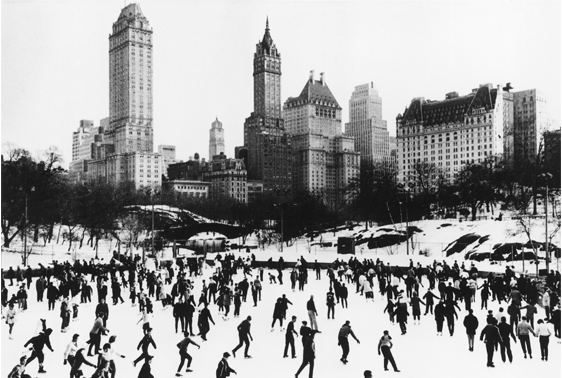
Skyline from Central Park, New York City, 1960 (b/w photo) / Photo © Neil Libbert / Bridgeman Images
For over 55 years, Neil Libbert has captured some of the most dramatic moments and iconic faces in western history. His candid photographs range from the 1981 Brixton Riots in London to children playing in Harlem, New York; celebrities such as Helen Mirren and Heston Blumenthal to ordinary everyday folks in the DHSS Benefit Office.
Libbert has worked for many of the world’s most prestigious publications, including the Guardian, The Sunday Times and The New York Times, and was recently exhibited at the National Portrait Gallery, London.
”People seem to think that my covering England’s 1966 World Cup victory for the Sunday Times must have been especially memorable, but I have never been a great fan of football. It was just another day’s work for me.”
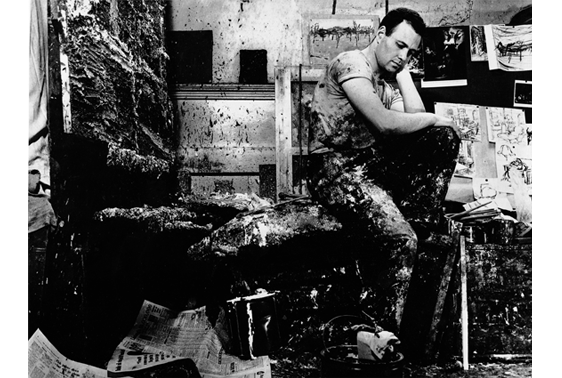
Frank Auerbach, 1963 (b/w photo), Jorge Lewinski (1921-2008) / Private Collection / © The Lewinski Archive at Chatsworth / Bridgeman Images
The Lewinski Archive at Chatsworth consists of 15,000 images of artists taken by Jorge Lewinski between 1962 and 1995. As an aspiring young photographer, he chose not celebrities, actors or writers as his subject matter but artists, his fellow image-makers. He photographed over 300 artists, often returning to photograph the same person over a number of years, and developed an evolving portrait not only of the artists themselves but also the changing styles of British art in this remarkable period.
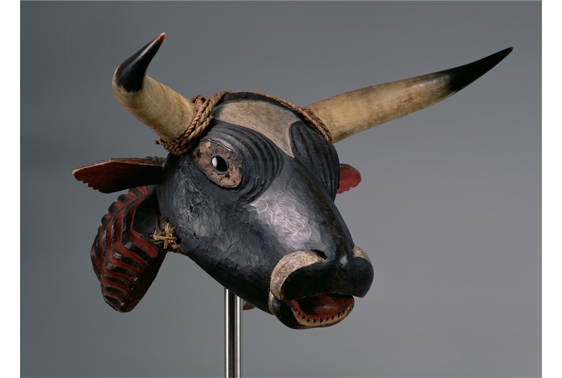
Bull Mask, Bijogo Culture, Bissagos Islands (wood, glass, horn & leather), African School / Private Collection / Photo © Heini Schneebeli / Bridgeman Images
Freelance Photographer Heini Schneebeli has been active for over 30 years, and in that time has built up a remarkable image for himself as a photographer of various artefacts from Ancient and World Cultures. The sheer range of items included in the archive photographed by Schneebeli are fascinating not just for their visual content but as an historical record of cultures, traditions and religions from another time.
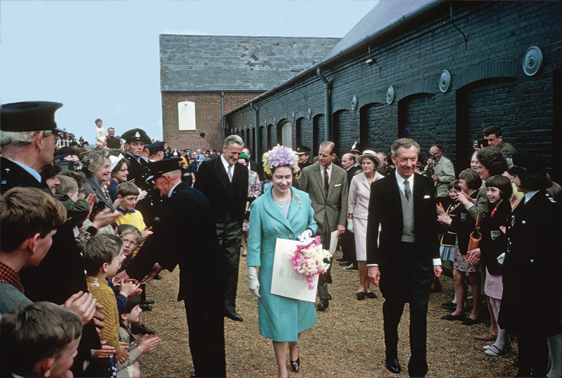
HM Queen Elizabeth II on the occasion of the opening of the Snape Maltings Concert Hall, Aldeburgh, Suffolk, June 2, 1967 (photo) / Photo © Brian Seed / Bridgeman Images
Brian Seed begun his career working as an office boy at a young age in the LIFE/TIME magazine London HQ. While the other runners stayed behind, he was promoted to work exclusively for LIFE, where he became embroiled in the world of photojournalism. Through a placement as a photographer’s assistant, he became a lifestyle photographer who has now travelled the world – though Britain still proves his greatest inspiration. He has published much of his work in LIFE magazine.
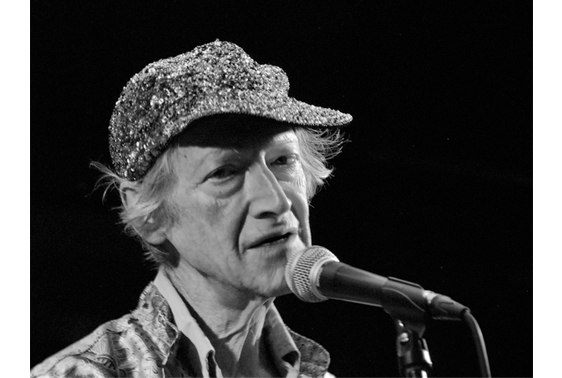
Michael Horovitz, Ronnie Scott’s, London, 13th June 2011 (b/w photo) / © Véronique Dubois / Bridgeman Images
Veronique Dubois is a freelancer with a self-made photographic career. After spending years experimenting with technique, documenting people going about their everyday lives, she found herself in London. She now has a regular post in Soho photographing visiting musicians for online distribution, and recently photographed Paul Weller at London’s Roundhouse.
She was invited to take photos of Damon Albarn, Graham Coxon, Paul Weller & Michael Horovitz for the cover of their album “Bankbusted Nuclear Detergent Blues” and the Record Day single “Ballade of the Nocturnal Commune”, both released on Gearbox Records. Some of these pictures have been published in music magazine NME. Over the years, she has built up a comprehensive music photography portfolio.
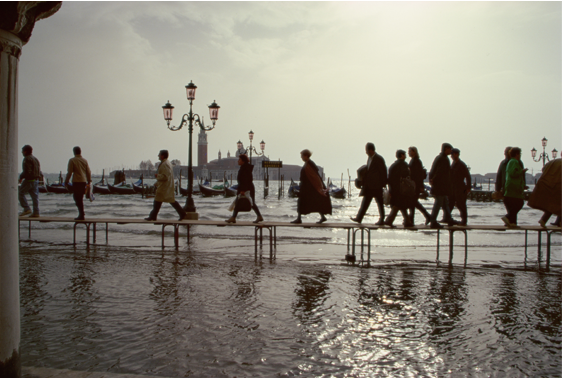
People walking across the Piazzetta on duckboards during High Water (photo) / Venice, Italy / © Sarah Quill / Bridgeman Images
The Venice Picture Library is a contemporary photographic archive of the City of Venice, islands and lagoon. Twenty five thousand colour transparencies cover more than a hundred categories, including architecture, sculpture, scenic views, churches and palaces, abstracts, tidal conditions, transport, everyday life, the environment and conservation. Begun in 1971, it is the work of one photographer, Sarah Quill.
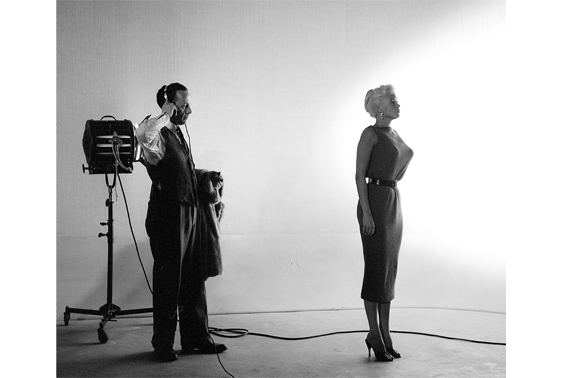
Jayne Mansfield and Floor Manager, Granada TV, London, UK, 1958 (b/w photo) / Photo © Marcus Harrison / Bridgeman Images
Marcus Harrison was born in Melbourne, Australia, in 1924. As a child he acted in radio and repertory theatre. After military service in the RAAF in World War 2 he became a house photographer at a nightclub in Sydney, In the 1950’s he came to London where he became a house photographer at various fashionable nightspots, including The Stork Club, Quaglino’s and The Embassy Club. He photographed film stars, society figures and royalty, in these glamorous oases that stood out from the austerity of post-war gloom. Marcus Harrison died in 2014.
Read More
Women Behind The Lens: Great Female Photographers
Explore Marvellous Monochromatic Photography of Architecture and Cityscapes elsewhere on the Blog
Discover fascinating Colour Photography from WWI

